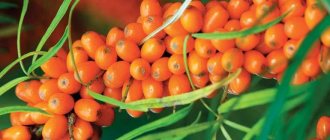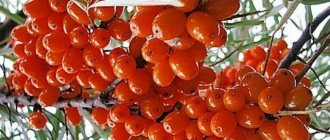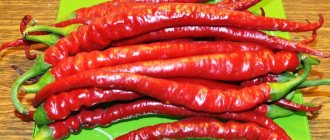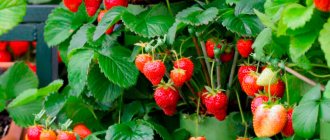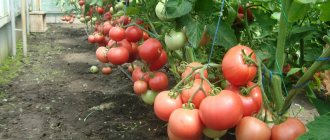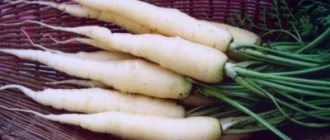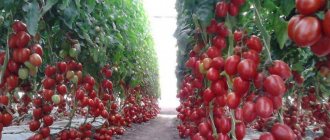About 70 varieties of sea buckthorn are grown in the territory of the former USSR. Among them there are thornless ones, dwarf ones, and those designed for particularly harsh climates. How to choose the best varieties of sea buckthorn that will take root in your garden and give a rich harvest?
Now, when the season for harvesting sea buckthorn has not yet ended, you can try different varieties of berries and choose the option to suit your taste. If you have a small area and you are ready to dedicate just one corner to this sunny berry, then self-fertile sea buckthorn will be the optimal solution. If sea buckthorn thorns scare you, then choose a variety without thorns - fortunately, there are now such.
Altai
The early autumn variety Altai appeared more than 35 years ago and has not lost popularity since then. Initially, it was intended for cultivation in the Ural Federal District, but is now zoned and used almost throughout the country. The main advantage of Altai is that there are almost no thorns on its branches - this allows you to harvest without cuts. From one mature tree you can collect up to 16 kg of sweet, fleshy fruits.
| Entry into fruiting | Tree height | Harvest | Features of the variety |
| 3-4 years after planting | Up to 4 m | End of August | Thornless branches, dry separation of berries from branches |
Moscow Pineapple
The aromatic berries of this variety can be picked already in mid-August, and up to 14 kg of fruit ripens on small-looking bushes. Although Moscow Pineapple is considered undemanding to the soil, it produces the greatest yield on light loamy or sandy loam soils. And of course, without the sun, the berries will be much more sour and will not acquire their unique aroma.
| Entry into fruiting | Tree height | Harvest | Features of the variety |
| 3-4 years after planting | Up to 3 m | August 15-20 | Few thorns, the skin of the berries is very thin |
Staged planting
Planting sea buckthorn in the spring should occur in several stages:
- In the fall, you need to prepare the area for planting: dig up the soil and add 20 g of potassium sulfate, 200 g of superphosphate, and several buckets of humus for every 1 m².
- In spring, dig holes at a distance of 2 m from each other. Dig a peg up to 1 m high, and only then fill the hole with soil, into which the seedling is planted.
- Leave a hole for watering near the seedling and immediately pour in 2 buckets of water.
In order for the shrub to take root well, after planting, the seedling must be watered daily for a month.
If you had to plant the shrub in the fall, you need to dig a hole, drive a peg into its center, pour soil from an adult sea buckthorn, humus, wood ash and a handful onto the bottom. double superphosphate. The remaining actions must be carried out in the same way as in the spring.
Did you know? In the 17th century, when the Cossacks were exploring Siberia, they did not have the necessary medicines, and they treated wounds and strengthened their health with the help of sea buckthorn.
Botanical
Botanical will be a godsend for businessmen or large families. Already in the fifth year, up to 20 kg of berries can be collected from the tree, which are easily torn off and do not lose their shape during transportation. This variety is winter-hardy and resistant to most diseases and pests, and its only requirement, besides sun, is regular and abundant watering.
| Entry into fruiting | Tree height | Harvest | Features of the variety |
| In the 2nd year after planting | Up to 3.5 m | August 6-28 | High yield, tolerates transportation well |
Sea buckthorn varieties for the Moscow region
Among the many varieties of sea buckthorn there is a group that is recommended for the Central region and the Moscow region in particular. They are productive and beautiful. Their winter hardiness is usually -30°C.
Vatutinskaya
Red-fruited mid-late variety of Altai selection. The crown is compact, compressed. The number of spines is minimal. The berries weigh 0.6 g each. There is little sugar in the fruits, so they are sour.
Excellent
A thornless, medium-sized bush about 2.5 m high. Life span is up to 30 years. Up to 7 kg of ripe berries are picked from the bush. The fruits weigh 0.8-0.95 g.
Gift to the garden
This early variety was bred specifically for conditions near Moscow. It is hardy and has thorns only at the tops of its branches. The berries are quite large, weighing 0.8 g. One bush can produce 20 kg. Berries can be used for a variety of purposes - pressing butter, juices, making jam.
Otradnaya
A variety of Moscow selection, hardy and frost-resistant. The peculiarity is the pear-shaped shape of the berries. The bushes are vigorous. The weight of the berries is 0.6 g. They are sour, slightly aromatic, ideal for preparing preparations. Up to 10 kg of berries are collected from the plant.
On a note! Many gardeners would like to have sea buckthorn varieties on their plot that do not produce shoots, but this crop actively reproduces by root suckers. To get rid of overgrowth, you have to regularly hoe the soil.
Giant
From the name of the variety it is clear that the berries of the Giant are very large - on an adult bush in a good season they ripen up to 18 kg. However, the variety also has a weakness - a very thin skin of the fruit. If you delay harvesting, a significant part of it can simply be crushed. In addition, the Giant's crown is prone to thickening and therefore needs regular thinning.
| Entry into fruiting | Tree height | Harvest | Features of the variety |
| In the 4th year after planting | Up to 4 m | Second ten days of September | Large but very tender berries |
Varieties with large fruits
Each sea buckthorn bears countless berries. Large-fruited varieties include plants whose berries weigh more than 0.8 g.
These are:
- Essel;
- Elizabeth;
- Augustine;
- Openwork.
Find out more about how to properly propagate sea buckthorn.
Essel
This tree-like plant belongs to the early category - the berries ripen in early August.
General description:
- crown of regular oval shape;
- almost no thorns;
- egg-shaped berry, quite long;
- the weight of a large fruit can exceed 1 g;
- orange fruit, dark tones;
- The pulp is juicy and sweet, with barely noticeable sourness.
Essel is a winter-hardy and hardy plant with a yield of 10–13 kg.
Elizabeth
The bush is low-growing and takes up minimal space in the garden. Ripens late.
Differences among other varieties:
- compact crown;
- weak prickliness;
- the orange fruits resemble a cylinder in appearance and weigh about 0.8 g;
- dessert taste with a pronounced aroma.
It is characterized by winter hardiness, as well as resistance to insects and fungi. Maintenance requires annual spring pruning. The berries are protected from damage by a strong skin, so they remain fresh for a long time. They can be canned or frozen.
Augustine
Augustine's fruits ripen early - by mid-summer. The latest date for the north is August, which determined the choice of name.
Distinctive features:
- wide crown with green leaves;
- minimum thorns;
- egg-shaped fruits;
- color - all shades of orange;
- bunches of large berries (weight up to 1 g);
- high yield - up to 18 kg.
The harvest is easy to harvest when the fruits are fully ripened. The plant easily tolerates sub-zero temperatures and insufficient humidity, and is resistant to all adverse influences.
Openwork
This variety of sea buckthorn is unpretentious in the choice of soil and successfully adapts to any environmental conditions.
Important! Sea buckthorn is contraindicated for people suffering from gastrointestinal diseases and urolithiasis.
Main characteristics:
- lush crown;
- thornless shoots;
- large fruits in the shape of cylinders;
- usual colors;
- abundant harvest early.
Even in harsh climatic regions, buds and shoots do not freeze. Not susceptible to most fungal infections common to garden trees. Easily tolerates summer drought.
The harvested crop can be safely transported and stored for a long period of time before processing. It is possible to use fresh berries. Freezing and canning are also practiced.
Dwarf
Sea buckthorn Gnome will not give you berries, but it will definitely come in handy on the plot. This particular variety is an ideal pollinator and its “male” plants are extremely valued by experienced gardeners. The small tree actively blooms and is capable of pollinating 5-7 “female” trees of various varieties planted nearby. The “male” tree should be planted on the windward side of the “female” tree or in the center of the planting if there are several trees.
| Entry into fruiting | Tree height | Harvest | Features of the variety |
| Doesn't bear fruit | 2-2.5 m | — | Pollinator variety |
Male varieties
The culture belongs to dioecious plants. Each sea buckthorn tree is unisexual. Some plants have only flowers with pistils - they then form fruits, others - with stamens. The condition for female trees to bear fruit is the presence of a male plant nearby. Sea buckthorn pollen is carried by the wind.
Now gardeners use special male varieties of sea buckthorn as pollinators, which generate pollen. One tree fertilizes from 5 to 10 female plants.
Aley
A productive male variety, in which about 95% of the pollen fertilizes female flowers. Zoned in Western Siberia. Doesn't bear fruit. The bushes are vigorous, without thorns. Blooms for a long time, winter-hardy. The height of the bush is up to 2.8 m.
Dwarf
The pollinator variety is winter-hardy, distinguished by decorativeness and high pollen productivity. The height of the bush is 2.5 m. It does not produce fruit. The plant can live about 80 years. The buds are large, pineal-shaped. The variety is winter-hardy, but does not tolerate temperature changes at the stage of stamen formation.
Gift of Katun
The small, sweet and sour fruits of the Gift of Katuni are located on non-thorny branches, but they are not easy to collect. From the very beginning of August, the gardener should regularly (every 4-5 days) check the berries for ripeness and, when they reach the desired taste, immediately pick them off. Very fast (literally within a week) overripening leads to frequent loss of yield. The variety is winter-hardy, as it was created for regions with harsh climates. It is imperative to plant Dar Katuni in full sun and in a place protected from drafts, because otherwise the moderate acidity of the fruit will become inedible.
| Entry into fruiting | Tree height | Harvest | Features of the variety |
| 3-4 years after planting | Up to 3 m | Mid August | Few thorns, fruits ripen very quickly |
Jam
It is not difficult to recognize Jamova among other sea buckthorns: each berry has two bright scarlet spots at the base and at the tip. Dense, fleshy berries are easily torn from the branches both in the case of manual picking and during mechanical processing of trees. The berry does not last long, but is ideal for freezing, making butter, compotes, juices, jams and purees. There are so many vitamins in the fruits that in terms of usefulness they are ahead of black currants and rose hips.
| Entry into fruiting | Tree height | Harvest | Features of the variety |
| In the 4th year after planting | Up to 2.5-3 m | Second half of August | Ideal for preparations and preservation |
Varieties
More recently, for everyone, sea buckthorn was a wild inhabitant of the Siberian forests, which reluctantly shared its useful fruits with humans. Now everything has changed dramatically, the plant can be found even in the south. In this case, the fruits will be quite large, and there may not be any nasty thorns on the trunk at all.
Today, the varietal diversity of sea buckthorn is quite large.
Increasingly, sea buckthorn is planted in their own garden plot and grown as a garden trunk with tasty fruits that can be used both fresh and prepared for the winter. Moreover, each gardener chooses for himself hybrids with certain characteristics.
The most common are:
- varieties with large berries
- without needles
- high-yielding varieties
- frost-resistant hybrids
Sea buckthorn without needles
Everyone has the right to choose which variety to grow on their plot; for some, the choice is so complicated that several plants with different indicators are planted at once. This is the kind of gardener who will always have a harvest.
The bred plant varieties will have a lot in common:
- it will not be possible to confuse the plant with other species; the general description will be similar
- Fruiting in hybrids will be more abundant
- berries are larger than wild trees
- the plant will have better resistance against diseases and pests
Frost resistance is not a distinctive feature of newly bred hybrids; sea buckthorn initially tolerates strong drops in temperature and poor watering.
Next, we’ll look at the varieties of sea buckthorn in more detail to help with the choice for everyone’s garden.
Elizabeth
Elizabeth can be considered perhaps the optimal solution for small summer cottages. This miniature tree has almost no thorns or leaves in the area of the berry cobs. Dry thin stalks tear easily, and you can get up to 16 kg of sweet berries from one bush.
| Entry into fruiting | Tree height | Harvest | Features of the variety |
| In the 4th year after planting | Up to 2.5 m | Second half of August | Dwarf tree with large berries, few thorns and leaves |
short
Low-growing varieties include sea buckthorn, the height of which does not exceed 2.5 m. You can pick fruits from such trees and bushes without stepladders or other devices - just stretch out your hand to get to the farthest berries.
Inya
Low-thorn early variety. The multi-stemmed bush has a spreading crown. The fruit has a blurred blush. Weight - about 1 g. The variety is winter-hardy and productive - you can pick up to 15 kg of berries from a bush.
Amber
A productive early-fruiting variety with a high concentration of oil and sugar in the fruits. This winter-hardy sea buckthorn is low-growing, almost without thorns. One berry weighs 0.6-0.7 g. It belongs to late summer varieties. You can collect up to 14.5 kg of berries from a bush. The older the bush, the higher the yield.
Druzhina
Early large-fruited sea buckthorn. The bushes are slightly spreading, compact. Without thorns. The weight of the berry is 0.8 g. More than 10 kg are collected from the bush. The variety is hardy - it tolerates lack of rain and frost well.
golden cob
Sea buckthorn of this variety, although it produces large yields, is not suitable for every summer resident. Firstly, Golden Cob trees are quite tall and, although their crown is compact, they take up a lot of space on the site. Secondly, small berries “sit” quite firmly on the branches and removing them without special devices will not be easy. And finally, the sour taste of the berries of this variety makes them almost unsuitable for fresh consumption.
| Entry into fruiting | Tree height | Harvest | Features of the variety |
| In the 3rd year after planting | 4-6 m | Beginning of September | Technical grade |
Bush non-thorny sea buckthorn
This sea buckthorn will decorate any dacha - small bushes look neat and attractive. Gardeners plant them along the fence or in the corners of the plot. Shaded places where little sunlight penetrates are suitable for growing.
Elizabeth
The bushes are low-growing with a compact crown. Sea buckthorn takes little time to care for - frequent pruning of shoots and crown formation are not required. Elizabeth matures at the end of the summer season. The variety is resistant to pests and diseases. Suitable for growing in the Urals and Siberia.
Fruit weight is up to 1 g, cylindrical in shape. The taste is sweet-sour, juicy and spicy. The berries grow on long stalks, so they are easily separated from the branch. The color is orange and stands out noticeably in the area. The fruits are added to pies and cakes, made into fruit drinks, and eaten fresh.
Baikal ruby
The height of the bush is up to 1 m, the crown is compact. Baikal ruby is unpretentious and grows in the coldest regions. Ripens in the second half of August.
The weight of the berry is about 0.5 g. The shape is oblong, the color is orange-coral. The pulp is dense, the taste is sweet and sour. Gardeners note high immunity - the crop does not get sick and is not damaged by insect pests. The yield is stable - up to 12 kg per plant over the summer.
Sayana
The mid-early sea buckthorn variety Sayana begins to bear fruit 3 years after planting. Recommended for cultivation in Eastern Siberia. Beautiful and compact bushes look harmonious on the site. The fruits are resistant to cracking, the variety does not suffer from fusarium.
The berries are oval, bright orange with a red tinge. The taste is sweet and sour, the aroma is moderate. The skin is dense, sea buckthorn comes off easily, and the spines are few. Productivity reaches 11–16 kg per season from one bush. The use of the fruit is universal.
Pepper
Thorns are found on Perchik bushes, but very rarely. The plant is compact, umbrella-shaped. Fruit weight is up to 0.7 g, the pulp is dense, the tear is dry. The shape is ovoid, the color is orange, the skin is glossy.
Productivity is about 7 kg per bush per season. Pepper ripens at the end of July - the first half of August, depending on weather conditions. Suitable for cultivation in the Central, Volga-Vyatka regions.
Pepper
A small charming tree of the Perchik variety is zoned for the Moscow and Leningrad regions, but it can also be grown in other regions with a similar climate. On average, from 7 to 14 kg of berries are harvested from one plant. Productivity depends on the timeliness of watering and fertilizing.
| Entry into fruiting | Tree height | Harvest | Features of the variety |
| 3-4 years after planting | Up to 2.5 m | Mid August | Low spreading tree with powerful thorns |
The most productive varieties
They are planted by both amateur gardeners and farm owners who grow sea buckthorn for processing. Most of the productive varieties belong to the latest achievements of breeders. One bush can produce three times more than ordinary sea buckthorn - 15-20 kg.
Nivelena
The bushes are slightly spreading, with a minimum of thorns. Has high immunity. Zoned in the North-West region.
The fruits are spherical. Weight - 0.5-0.8 g. The fruits are well transported and stored for a long time. Harvest - 20 kg per bush or more. With large-scale cultivation, up to 1.6 kg of berries are harvested from 1 sq.m.
Chuyskaya
An ancient variety bred in Altai. It is grown throughout the country - from the Far East to Kaliningrad. It has the shape of a bush with many trunks. Immunity is high. Purpose - drying, juices, jam, etc.
Productivity - 10-12 kg per bush. With intensive agricultural technology, they gain up to 23 kg. Weight - 0.85-0.9 g. Transports well. Productivity is highly dependent on watering. It produces fruits in the 3rd year of life. The oil in the fruit is half that of commercial sea buckthorn.
Botanical
Mid-early sea buckthorn with early fruiting. The bushes are medium-sized, medium-spreading. There are few spines, they are concentrated at the tops. Berry weight is up to 0.8 g. They are well transported. Berry picking - 20 kg per bush. Does not suffer from endomycosis and wilting.
Moscow beauty
Dessert sea buckthorn with stable yield, winter-hardy and unpretentious variety. Zoned in the Central region. Almost no thorns. Berry weight - 0.6 g. The pulp is tender, sweet and sour. It is possible to collect 15 kg per plant.
Darling
An early fruiting variety with medium-sized bushes. Minimum thorns. Characterized by stable fruiting. Height - up to 2.5 m. Suitable for preparing blanks. Weight - 0.66-0.7 g. 13 kg are collected from the bush.
Excellent
This variety, bred for Siberia, can now be found in many regions of Russia and the CIS countries. It is winter-hardy, undemanding to soil, and easily tolerates lack of moisture and nutrients. Unfortunately, even with proper agricultural technology, the plant will produce no more than 7 kg of berries per year. If you do not need huge supplies of sea buckthorn, but prefer decorativeness, bright taste and safe harvesting, then Excellent is your option.
| Entry into fruiting | Tree height | Harvest | Features of the variety |
| In the 4th year after planting | 2.8 m | Late August – early September | Low yield, lack of thorns |
Application
- Sea buckthorn is used quite widely due to its unique biological properties:
- a strong root system not only keeps the soil from erosion, but also accumulates soil nitrogen, so it can be used for land cultivation;
- A 6-year-old sea buckthorn plantation can produce up to 18 tons of firewood;
- the thermal value of wood is 4785.5 kcal/kg; accordingly, 1 ton of firewood obtained is equal to 0.68 tons of coal;
- it is used to strengthen river banks, steep slopes, roadsides and other vulnerable areas;
- useful for reducing soil contamination from mine dump erosion;
- is planted along highways, as it is one of the few plants that are neutral to de-icing salt and other components that are sprinkled on the highway in winter.
The berries are grown for juice. On its own, it is very acidic, so in juicing it is mixed with other ingredients to reduce acidity, such as apple or grape juice.
When the berries are pressed, the resulting sea buckthorn juice is divided into three layers:
- thick orange-colored butter on top;
- in the middle there is a layer containing a large volume of saturated and polyunsaturated fats;
- the bottom layer is the sediment and the juice itself.
Important! Sea buckthorn berry is the third largest source of vitamin E among all plants. And this is the main ingredient necessary for healing wounds and burns.
The layer containing oil is used for cosmetic purposes. The middle one is used in creams. And the lower one becomes the juice from which jellies, syrups or marinades are made. The syrup is often used for medicinal purposes. In the Balkans, sea buckthorn juice is included in fish sauce. The bright orange berries can also be fermented into wine with an orange hue and a slightly sour taste.
Video: Preparing sea buckthorn juice
In landscape design
Decorative in sea buckthorn are considered to be both silver-gray leaves, which will delight the eye throughout the warm period of the year, and berries - from late summer to early autumn.
Did you know? The tallest sea buckthorn was found in Mustang in 1992. The height of the tree is 17 m, and the lifespan is
-
320 years old, and it still bears fruit.
In landscape design, this plant is used to create bright decorative hedges. To give it shape, seedlings are planted supported on a metal trellis. The bush itself can withstand strong winds due to its root system, so sea buckthorn is often planted where it is necessary to strengthen the soil.
Considering that the bushes do not have a strict geometric shape, they need to be trimmed periodically: in this way you give the hedge a well-groomed appearance. Branches can be cut and thinned to replace some of the old shoots with new ones. This must be done selectively, since the berries form at their ends.
In folk medicine
Sea buckthorn berries, in particular, the oil obtained from it, find their use in traditional medicine recipes. The ancient Greeks, as well as Tibetan doctors during the Tang Dynasty, used it to treat coughs, improve circulation, digestion, and relieve pain.
- Medical use of sea buckthorn in recipes of different nations:
- Indian medicine uses the hemostatic and anti-inflammatory properties of the berry. It was used to treat pulmonary diseases, gastrointestinal, heart, blood, liver and metabolic disorders.
- Ancient Tibetan medical literature describes the use of berries for fever, inflammation, intoxication, abscesses, coughs, colds, phlegm cleansing, laxative purposes, to treat tumors (especially in the stomach and esophagus) and gynecological diseases.
- In Tajikistan, flowers are used as a skin softener.
- In Mongolia, extracts of leaves and branches are used to treat colitis and enterocolitis.
- In Russia, oil from seeds and fruits is used topically to treat chronic dermatoses, eczema, psoriasis, lupus erythematosus, burns, frostbite and cervical erosion.
Scientific research has confirmed the traditional use of sea buckthorn. Its golden-orange fruits contain vitamin C, vitamin E and other nutrients, flavonoids, oils, and are rich in essential fatty acids. Their chemical composition contains more than 190 beneficial substances and phytonutrients, and this provides such an impressive list of medicinal properties.
Thanks to this, berries can also have a broad effect on the healing process:
- eye diseases;
- dermatitis;
- circulatory system;
- gastrointestinal tract.
Did you know? Considering the information about the medicinal use of this plant, it can be argued that it began to be used as early as 800 AD. e.
Modern scientific literature describes numerous pharmacological properties of sea buckthorn, including antimicrobial, anticarcinogenic, antioxidant, radioprotective and antiplatelet. It supports the functioning of the cardiovascular system and liver, affects the health of the skin and mucous membranes.
No confirmed data on the possible toxicity of the berry or contraindications for diseases was obtained during the research, therefore sea buckthorn is considered one of the safest fruit crops. Although sea buckthorn has been used in Asian medicine for thousands of years, it, like any product, has limitations on its use. So, when consumed in large quantities (over 100 g per day), pigmentation of the skin is possible, because the berries contain a lot of carotene. This is not dangerous, and the effect will disappear as soon as sea buckthorn stops entering the body.
About
Self-fertile
A new word in sea buckthorn breeding is a self-fertile variety. So far there is only one, it grows only in the middle zone and does not produce very abundant harvests, but a start has been made, which means that more advanced representatives of this direction will soon appear. The berries on self-fertile sea buckthorn grow large, up to 2 g, sweet and sour, although they are not separated from the branches very well and are adjacent to solid thorns.
| Entry into fruiting | Tree height | Harvest | Features of the variety |
| 3-4 years after planting | Up to 3 m | End of August | No pollinator required |
What does it take for sea buckthorn to become self-fertile?
Sea buckthorn is a self-sterile plant. Nature has decreed that each representative of this shrub is unisexual - some have only female (pistillate) flowers, others have male (staminate) flowers. Pollination occurs with the help of wind. In order for female bushes to bear berries, there needs to be a pollinator growing in the area - at least one per 10 plants, and preferably 4-5.
Self-fertile are considered to be those representatives of the flora in which: a) stamens and pistils are located in one flower; b) female and male flowers bloom on the same plant.
In order for sea buckthorn to become self-fertile, its genetic apparatus must be changed. It is necessary to influence the inherited characteristics in such a way as to break the usual DNA chains and create completely new plant forms not found in nature. Perhaps these will be parthenocarpic hybrids, capable of setting fruit without pollination at all.
In breeding, special substances – chemical mutagens – are used for this purpose. They treat the seeds and thereby trigger a chain of genetic mutations. High doses of mutagens lead to unpredictable changes. One of these mutations is the appearance of experimental samples of self-pollinating sea buckthorn. But this trait is unstable; not all plants grown from treated seeds exhibit self-fertility. Therefore, we can talk about research in this area, but not about stable varieties.
Stimulation selection has recently been used quite widely. Mutagens in small doses make it possible to create super-yielding, large-fruited varieties, and get rid of unnecessary traits (thorny shoots, excessive growth). Breeders use seed treatment to accelerate the ripening of fruits and influence their taste characteristics.
Solar
Another variety of sea buckthorn without thorns grows well in the middle zone and in the north of Russia, and is undemanding to soil and watering. Unlike most of its counterparts, Solnechnaya forms a crown of 2-3 main branches and this must be taken into account when pruning. Numerous root shoots will have to be removed twice a year, otherwise it will take away the plant’s strength and reduce productivity. Solar berries are universal: they store well, do not lose their presentation for a long time and are useful both fresh and processed.
| Entry into fruiting | Tree height | Harvest | Features of the variety |
| In the 3rd year after planting | Up to 3 m | Mid August | Thornless, winter-hardy, drought-resistant |
Features of the plant
Sea buckthorn is a widespread crop in Russia.
It comes in 2 different types:
- Hippophaë rhamnoides (sea buckthorn), which grows as a shrub throughout Europe and temperate Asia;
- Hippophaë salicifolia (sea buckthorn), a tree-like form of eastern origin.
It is a deciduous, dioecious, branched, thorny plant. It has a highly developed root system, which is capable of developing new territories in a short time. Sea buckthorn is undemanding to soil quality, so it can even grow on mine dumps, roadsides and other areas unfavorable for crop production.
Did you know? The ancient Greeks fed horses with sea buckthorn leaves to heal them and rubbed their skin with the fruit. This improved the health of the horses and gave their skin a magnificent shiny appearance.
All forms are characterized by:
- shoots: covered with thorns; near a bush they are erect, near a tree they are slightly drooping;
- leaves: alternate, narrow and lanceolate, silver-gray in color;
- leaf length 3–8 cm and width less than 7 mm;
- flower: male - brown, consists of 6 petals, and female - yellow, bell-shaped, consisting of 4 petals;
- fruit: drupe, orange in color with a fleshy, overgrown receptacle;
- seeds: dark brown, glossy, ovoid or elliptical;
- oil content in seeds: 8–18%;
- height: tree - 15 m, bush - 0.9 m.
Chuyskaya
The Chuyskaya variety, developed in Siberia, has a rich history, and many gardeners grow these trees out of habit. With all the advantages (fruiting without care, pollination from “male” wildflowers, abundance of berries), Chuyskaya also has “weaknesses”. It is afraid of winter thaws and can wake up even in the middle of winter if the weather is sunny and warm for several days, its roots are often dampened, and young trees are prone to mycotic drying out. Therefore, choose Chuyskaya for planting only if you are ready to devote time to the plant.
| Entry into fruiting | Tree height | Harvest | Features of the variety |
| In the 4th year after planting | Up to 3.5 m | Second half of August | Prone to damping off, susceptible to diseases |
Essel
Sea buckthorn of the Essel variety can produce large, sweet berries that will cover the entire adult bush. Their dessert taste and bright aroma allow you not only to process the harvest, but also to enjoy fresh fruits. Unfortunately, such wealth will also have to be taken care of - the variety is susceptible to mycotic drying out and scab disease. However, timely pruning of affected branches, thinning the crown and treating trees with a 1% solution of Bordeaux mixture a month before harvest will protect your green pets.
| Entry into fruiting | Tree height | Harvest | Features of the variety |
| In the 3rd year after planting | Up to 3 m | End of August | Thornless, large-fruited, dessert-flavored berries |
Amber
The tree of this disease- and pest-resistant variety actively bears fruit until the 12th year of life, and each adult plant produces up to 14 kg of berries. There are practically no thorns on the branches, so you can harvest without fear. The only thing you should pay attention to when growing Amber is the timely preparation of young replacements from cuttings or root shoots. By the way, although the trees of this variety are not tall, their crown is spreading, so you can only plant something shade-tolerant under sea buckthorn.
| Entry into fruiting | Tree height | Harvest | Features of the variety |
| In the 4th year after planting | Up to 3 m | Late August – early September | Abundant fruiting, spreading crown almost without thorns |
As you can see, there is sea buckthorn for every taste and color. The abundance of useful substances and the decorative appearance of this berry clearly outweigh the possible disadvantages, so it’s definitely worth having a bush with golden fruits on your plot or in front of it.
Frost-resistant varieties
For sea buckthorn, resistance to cold is a natural characteristic, because it is considered a Siberian garden dweller. But still, for some regions, more hardy varieties are needed, based on this, breeders have bred several such plants. Their frost resistance is simply amazing; at noticeably low temperatures in drafts, the trunks continue to bear fruit abundantly every year.
Frost-resistant variety
There are no special care requirements for varieties with increased frost resistance, everything is as usual. Regular pruning of the crown, application of mineral and organic fertilizers, loosening the soil around the bush will bear fruit soon.
golden cob
Golden Cob The sea buckthorn variety Golden Cob exhibits high levels of winter hardiness. During the fruiting period, the trunk is distinguished by dense clusters with brightly colored berries. The berries are quite large, each reaching at least half a gram in weight, the color characteristic of plants of this type.
The yield from the trunk is high and is often used in gardening.
The main characteristics are:
- the plant has practically no thorns
- leaves are elongated, green above and silvery below
- ripe berries are large, with excellent taste
A special feature of the variety is the cobs, in which the berries are collected on the trunk.
Trofimovskaya
Trofimovskaya A feature of this variety is not only its high resistance to frosting of the buds in winter, but also the endurance of already blossoming shoots during the spring period during frosts. The standard is widespread not only in Siberia; it is successfully grown in almost all regions.
The characteristic features of the standard are:
- tall, the plant can reach 4.5 meters in height
- large fruits, each can reach a weight of up to 0.7 grams
- a large number of hearths on the branches
- bright color, the berries look like flames and have a reddish tint
A big plus for Trofimovskaya sea buckthorn was the increased content of ascorbic acid in the berries, which is why it is especially valuable among the population.
Gift of Katun
Gift of Katun The compact bush differs from its relatives in the unusual shape of the leaves; they are concave inward and have a bright green color.
Other characteristics of the shrub are:
- compact size, the bush grows no more than 2.7 meters in height
- oval-shaped crown, medium thickened
- the trunk may have a small number of small thorns, but in most plants they are completely absent
- ripe fruits are round, large, reaching 0.7 g each
- Ripening occurs in the second half of August, this is indicated by the orange color of the berries
- The most fruit-bearing shrubs are considered to be in the period from 3 to 12 years from the moment of planting
Gift of Katun is distinguished by high frost resistance; breeders also highlight the variety’s resistance to various diseases and pests.
Excellent
Excellent The spiky varieties with high frost resistance include the Prevoskhodnaya sea buckthorn variety.
It is distinguished by:
- pyramidal shape of the crown of the trunk
- average number of dry spines throughout the trunk and shoots
- leaves are medium, dark green in color, the shape is characteristic of the plant
- Fruiting begins 4 years after planting in a permanent place
- high yield, up to 14 kg per stem
- the berries are orange, juicy, round, reaching 0.8 g each
The berries are consumed mainly fresh; when processed, the product will yield a lot of juice.
Baltic surprise
Surprise of the Baltic Free pollination of the Baltic variety of sea buckthorn gave excellent results, which were subsequently isolated into a separate variety by breeders of the Don Research Institute. Stamb mainly grows in the Kaliningrad region and is common in the Baltic republics. It has high frost resistance and is not afraid of diseases and pests.
The variety is classified as late-ripening, ripening begins at the end of summer, sometimes the berries begin to turn yellow only in September.
The standard is characterized by:
- low crown
- ripe fruits are orange with red spots
- average yield, up to 9 kg per mature tree
The berries have a thick skin and are easily separated from the stalks when harvested. They are well transported and have good shelf life if certain conditions are met.
Siberian blush
Siberian blush A distinctive feature of the variety is not only its high resistance to frost in winter, the trunk begins to bear fruit already in the third year after planting, and the fruits ripen in mid-summer.
The disadvantage of the variety is that in the absence of preventive measures, the trunk can be affected by endomycosis and sea buckthorn fly, which will significantly reduce fruiting and can destroy the plant completely.
The shrub has a medium crown with large leaves, of which there are many on the shoots. There are thorns on the branches, but not many of them. Fruiting is abundant, the berries themselves are large and there are many of them on the branches. The color of ripe fruits is orange, and can turn into bright red. Each berry reaches 0.7 g in weight. The harvested crop is very aromatic, its sweet and sour taste allows it to be used both fresh and for further processing for longer storage.
Frost resistance for some regions is an integral component for all cultivated crops; it is this trait that allows harvesting even after very cold winters.




